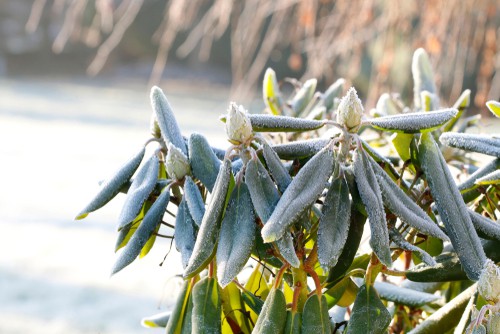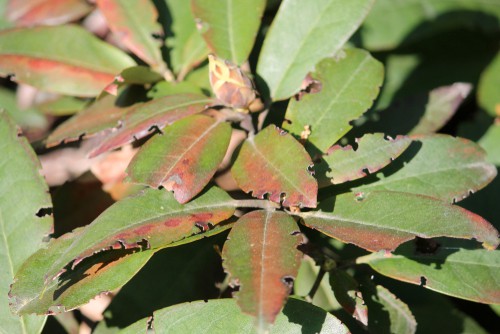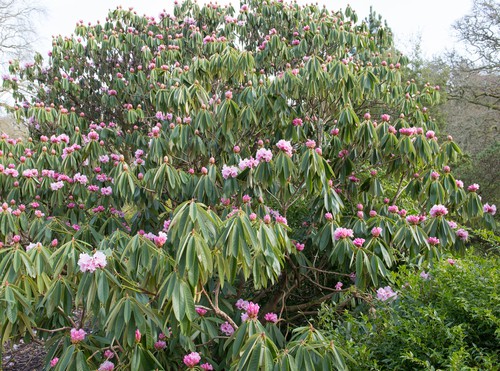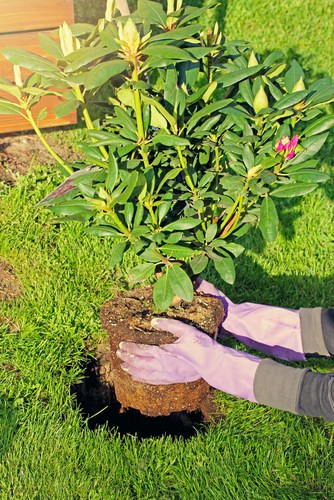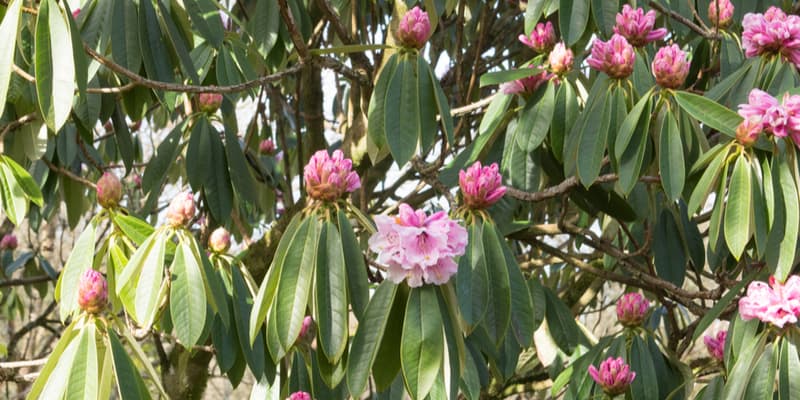
Why Are The Leaves On My Rhododendron Drooping – 8 Possible Reasons
Our site is reader supported, this means we may earn a small commission from Amazon and other affiliates when you buy through links on our site.
Rhododendrons are typically healthy plants known worldwide for their brightly coloured spring blooms. This sturdy plant comes in many different varieties of varying heights and foliage mass. If you have one in your garden, you might start worrying once you notice foliage starting to curl inwards or droop. Please, do not panic, finding the root cause of the problem will go a long way in restoring your Rhododendron’s health.
Below is a checklist of some reasons why your Rhododendron’s leaves are drooping, if you have leaves that are brown then this is probably leaf scotch which I covered in this guide here:
What is causing the leaves on my Rhododendron to droop?
1. Cold winter weather can cause the leaves to wilt
Rhododendrons are evergreen plants and therefore, they have to find a way to deal with winter. That is why you may notice the leaves curling inwards to prevent too much moisture from escaping. To help the plant survive winter, ensure that it receives adequate water. You can do this by setting up an irrigation system to slowly drip water at the base of the plant so that the roots can access it easily. The idea is to give the plant enough water without waterlogging the soil.
Additionally, the use of mulch will help the plant reserve the moisture in the soil and act as a temperature regulator. In general, cold weather and frost will cause teh leaves to droop but this is usually normal and once the weather warms they will perk up again.
2. Is your rhododendron not getting enough water in a draught
Like most plants, dehydration can lead to the wilting of leaves. Rhododendrons have fairly shallow root systems for their size; therefore, they cannot penetrate deep into the soil to reach water. That means that the topsoil needs watering frequently to prevent dehydration, especially in summer when rainfall is limited and especially during a drought.
3. Pests such as vineweevil can cause wilting
Vine weevils may look harmless but they can cause a lot of damage. While adult weevils will not do much damage to the plant apart from chomping irregularly on the foliage, the baby grubs do the most damage. Vine weevils usually lay their eggs in the plant’s roots system and when they hatch, the grabs need food to grow; hence, the little grubs eat at the roots, which are vital for the plant to get water and other nutrients.
Once the roots are compromised, the plant weakens causing the leaves to droop. Adult vine weevils are manageable using specialised insecticides or you can attach a sticky surface to the stem to trap them.
I find that the best way to deal with the weevil grubs is by using nematodes such as Steinernema kraussei because insecticides are not always effective. Nematodes will kill the larvae without harming the plant or introducing toxins to the soil.
Apart from vine weevils, also be on the lookout for pale-looking leafhoppers and scale insects that suck sap from the plant thus weakening the plant. These can usually be treated with a pesticide.
4. Rhododendrons can wilt on very hot days
With climate changes noticeable worldwide, too much heat causes Rhododendron leaves to droop. Air temperatures above 95°F cause the leaves to start drooping; therefore, make sure the soil is moist to guarantee the plant is hydrated. If your Rhododendron is potted, move it to a cooler location until the air temperature cools down. This is usually more of a problem in warmer parts of the USA.
5. Overwatering rhododendrons can caurse more harm than not watering
Rhododendrons enjoy well-drained acidic soils; thus, waterlogged soils are not good. Exposing the roots to too much water attracts the growth of fungi such as phytophthera and the roots can rot. The problem with root fungal infections is that you might not notice the damage until you dig to expose the roots and by which time it’s too late.
Luckily, the roots are shallow; hence exposing them will be an easy job. Once you expose the roots, take note of the colour; if the roots are black, the infection has already set in. Therefore, as a preventive measure, it is preferable to grow the evergreen plant in well-drained moist soil with proper ventilation.
6. Look our for Phytophthora Root Rot
The soil used and how deep you choose to plant your Rhododendrons will affect its exposure to root rot. As said before, these plants enjoy well-drained soils and that does not include clay. If you are determined to plant Rhododendrons in clay soil, you need to add plant matter such as leafmould or compost to create air pockets in the soil and add gravel to the soil to improve the overall drainage. The air pockets help with ventilation and allow more water to drain from the topsoil.
Planting the root system too deep will stifle its growth and expose it to more water than needed therefore promoting root rot.
7. Has you recently replanted the rhododendron?
If you just replanted Rhododendrons, it will take time for the root system to spread out accordingly. You might have watered the soil, but due to the compact structure of the root ball, the plant won’t get the nutrients it needs hence the drooping leaves. To combat this, use an irrigation system or dripping hose that will deliver small amounts of water until the root ball is moist. You will know if the root ball is well watered because the leaves will spring back to life.
8. Voles
Voles are rodents related to hamsters and can cause damage to your Rhododendrons. Voles enjoy chewing on the plant’s bark and roots, which weakens the plant eventually. These small rodents are tricky to catch but you can use traps or poison to keep them from harming your plants. Also, ensure not to apply too much mulch that will cover the trunk because you won’t be able to notice the damage done in time.
Apply a tree sealant to any open wounds to prevent infections and help the plant recover quickly. With that said, I hope you have learnt a thing or two about Rhododendrons and some of the things you can do to tackle these issues. I believe your Rhododendrons are in capable hands.
